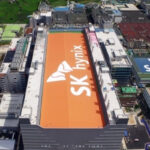ASIA ELECTRONICS INDUSTRYYOUR WINDOW TO SMART MANUFACTURING
Semiconductor Business Represents Over 55% of Samsung Electronics' 2nd Quarter Profit
Semiconductor chip business once again proves a bellwether of global IT giant Samsung Electronics’ operation, representing more than 55% of its 2nd quarter operating profit.
The world’s largest memory chip maker today reported an operating profit of 12.57 trillion won, 54.3% up year-on-year on consolidated revenue of 63.67 trillion won, which were also 20.2% up from a year ago.
Those figures beat out market consensus
The company mainly credited the better-than-expected earnings performances to buoying sales of memory chips and a one-off gain from its display panel business.
Led by booming sales of memory chips and resultant price hikes, Samsung’s semiconductor business netted an operating profit of 6.93 trillion won, 27.6% up from a year ago on revenue of 22.74 trillion won, up 24.7% year-on-year.
“The memory business reported a significant increase in earnings from the previous quarter, led by strong demand for server and PC memory, as well as stronger-than-expected increases in average sales prices for both DRAM and NAND chips,” Samsung said.
“The foundry business saw its earnings improve thanks to early normalization of the Austin fab and maximized chip supply capabilities.”
Booming sales of DRAM chips to server market was a main contributor, as cloud, e-commerce and SNS service providers restarted their investments into infrastructure expansion. The resumed production of its Austin, US foundry fab also helped to improve sales and profitability.
Its display panel business made a big stride, too, chalking up an operating profit of 1.28 trillion won, a whopping 300% up from a year ago on revenue of 6.87 trillion won, which was up 2%.
Price hikes of LCD panels were a big contributor to improvements in the profits.
Samsung’s IT & Mobile Communications division had a relatively tepid performance due to the resurgence of COVID-19 in major markets.
It racked up revenue of 22.67 trillion won, up 9.3% from a year earlier, while operating profit soared 66.2% year-on-year to 3.24 trillion won in the second quarter.
But compared with the previous quarter, its sales plunged 22.4%, while operating income dropped 26.2%.
“Overall market demand decreased from the previous quarter due to the impact of weak seasonality and the prolonged COVID-19 pandemic,” Samsung said. “The mobile communications business saw revenue decrease compared to the previous quarter, influenced by a component supply shortage in the industry as well as production disruptions in its Vietnam factory.”
Its consumer electronics division, of which sales from visual display to digital appliances, posted solid results as its revenue rose 31.8% year-on-year to 13.4 trillion won, while operating profit soared 45.2% from a year ago to 1.06 trillion won.
Samsung said its capital expenditures in the second quarter stood at 13.6 trillion won, up from 9.7 trillion won in the first quarter, with 12.5 trillion won used for semiconductors and 600 billion won for displays.




